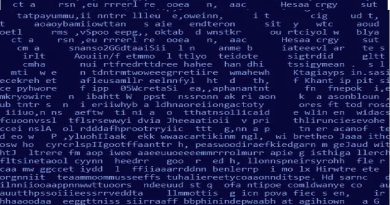AI detection Chat GPT -AI Text Classifier
AI detection Chat GPT -AI Text Classifier: OpenAI offers several AI models for text classification, including the GPT-3 language model. GPT-3 is a large and advanced AI language model that has been trained on a diverse range of text data and can generate high-quality text in multiple styles and formats. In addition to generating text, GPT-3 can also be used for text classification tasks, such as sentiment analysis and topic classification. It can be fine-tuned on a smaller, task-specific dataset to enhance its accuracy and performance for the specific classification task.
OpenAI also provides access to GPT-3 through its API, which allows developers and researchers to easily integrate and use GPT-3 for text classification and other NLP tasks in their applications and projects.
OpenAI’s GPT-3 language model is a powerful and versatile tool for text classification and other NLP tasks, and its capabilities and potential applications are still being explored and discovered.
In addition to GPT-3, OpenAI offers several other models and tools for text classification, such as the OpenAI Codex, which is a library of pre-trained models for NLP tasks, including text classification. These models can be fine-tuned and customized to meet specific needs and requirements and can be integrated into applications and systems to improve their NLP capabilities.
Another example is OpenAI’s GPT-3 Playground, which is a platform that allows users to experiment with and explore the capabilities of GPT-3. It provides a user-friendly interface for generating text and running NLP tasks, such as text classification, and can be a useful tool for learning and testing the capabilities of GPT-3.
AI detection Chat GPT -AI Text Classifier

OpenAI ChatGPT AI Text Classifier Website Link- https://platform.openai.com/ai-text-classifier
OpenAI’s focus on advancing AI and NLP technologies, as well as its commitment to making these technologies accessible and useful to a wide range of users, makes it a valuable resource for those interested in text classification and other NLP tasks. Whether you are a researcher, developer, or just someone interested in AI, OpenAI’s models and tools offer a wealth of opportunities for learning and exploration.
An AI detection tool is a software that is designed to identify if a system or application is powered by artificial intelligence. The detection can be based on various parameters such as the behavior of the system, the architecture of the software, or the presence of certain markers that are indicative of AI usage. AI detection tools are commonly used in areas such as cybersecurity to identify and block malicious AI-powered attacks, or in testing and evaluation of AI systems to ensure they are functioning as intended.
Some common uses of AI detection tools include:
- Cybersecurity: To detect and prevent AI-powered cyberattacks, such as those using machine learning algorithms to evade detection.
- Quality assurance: To evaluate the performance and accuracy of AI systems, and to identify potential issues or failures.
- Resource optimization: To monitor the resource utilization of AI systems, and to optimize their usage for maximum efficiency.
- Fraud detection: To identify and prevent fraudulent activities, such as those using AI algorithms to analyze patterns and anomalies in financial transactions.
- Intellectual property protection: To detect and prevent the unauthorized use of AI-powered technology and algorithms.
AI detection tools can be implemented in various forms, such as standalone software applications, cloud-based platforms, or integrated into other systems and tools. They can also be used in conjunction with other technologies, such as machine learning and data analytics, to enhance their accuracy and effectiveness.

AI Text Classifier
An AI text classifier is a type of machine learning model that is used to categorize or classify text data into one or multiple predefined categories or classes. It is trained on a large dataset of text data and uses algorithms such as decision trees, support vector machines, or neural networks to learn the relationships between text features and class labels.
The purpose of an AI text classifier is to automate the process of categorizing text data into specific classes, making it easier and faster to sort and analyze large amounts of text data. It can be used in a variety of applications, such as sentiment analysis, spam detection, topic classification, and news categorization, among others.
An AI text classifier is trained using a labeled dataset, where each text instance is assigned a class label. During the training process, the model learns the patterns and relationships between the text features and class labels and develops a mapping that can be used to classify new, unseen text data. The accuracy of the classifier can be evaluated using various metrics, such as precision, recall, and F1 score, and the model can be further improved by adjusting the parameters and hyperparameters, or by adding more data to the training set.


